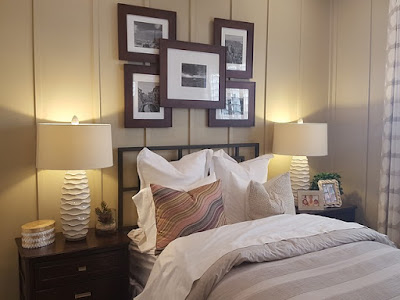Fresh artworks can infuse a new life in your surroundings and add a creative flair to the décor
The festive season is a great time to renovate and redesign interiors and add finishing touches to the décor. A beautifully designed space is incomplete without good art. Paintings on the wall, sculptures and installations in open spaces, murals painted directly on wall surfaces, assemblages and tabletop sculptures among a host of other options offer multiple ways to individualize interiors and add that creative flair to the décor. The festive season is therefore a great time to buy art for display in your home and also as a gift for loved ones.
- When buying art, it is best to buy original art by well-known artists, which is not only a great investment but also adds class and personality to the décor. Buying fresh artworks can infuse a new life in your surroundings. Colours from the painting can be repeated or coordinated in the furnishings and even wall colours. And, one can actually decide on furniture, architectural details, for instance create wall niches to display art, flooring, drapes and other furnishing and accessories based on the art.
- Also, art can be purchased as a basis for decorating interiors or selected according to the existing décor. For instance, when renovating, select an artwork which can provide a theme for the décor and can even help in choosing the décor style, for instance, ethnic, modern or eclectic, for that particular space or the entire home according to one’s preferences. Look for artworks which appeal to you and then evaluate the purchase based on the available space, wall surface, size and budget.
- Commission an artist to do an artwork which is exactly to your specifications in terms of space, size, colours and subject. Discuss the concept and your requirements with the artist to chalk out a blueprint that matches perfectly. Paint an entire wall around a festive theme or paint a piece of furniture in multi coloured hues. It could be an abstract rendition or a work in pop art. There are immense possibilities when you work with an artist directly.
- Folk art in vibrant hues is also a good option during the festive season; these are priced affordably and also explore traditional celebratory themes. Buy from galleries which promote folk art where you can purchase exclusive pieces, rather than mass produced images.
Display
To ensure the focus remains on the art piece, the space should be clutter free and the painting well lit. When putting up large paintings it is best to space them out. Save oversized paintings for large areas. Small paintings that reflect a theme or a colour scheme can be grouped on a wall; an odd number is visually more pleasing to the eye.
The wall surface and its size can also be used as a guide to select a set of paintings, for instance, paintings can be grouped vertically on a narrow strip of wall. In passages, more than one painting can be hung on the wall to create a visual diversion in a functional space that is unexciting by itself. Similarly, a set of small paintings in the kitchen is better than having a single large one.
Paintings are typically hung on walls, however, they can also be displayed on a floor easel, which is a great way to fill up spaces; it is especially useful when you don’t want to put nails in the wall. Smaller paintings can be displayed on tabletops with the help of small easels or can be rested against books.
Art can be accentuated with the help of ceiling-mounted spotlights or recessed lights as direct light can damage the paintings.
Published in Times of India, Bangalore
Images courtesy pixabay
If you enjoyed reading this article, do share it using the social media widgets at the bottom and subscribe to receive regular updates from Art Scene India
Related Posts,
- Artistic Touch to Festive Decor
- Abstract Art for Interiors
- Art on Rugs and Tapestries
- Artistic Expressions with Glass
- Miniature Paintings in Home Décor
- Painting a Wall
- Art for Festive Occasions
- Displaying Art in Home Interiors
- Hyperreal Art Makes An Impact
- Art in Interiors: Murals Bring Art to Interiors
- Chromatic Frames to Display Art
- A Tradition of Textile Art
- Art Installations to Complement Home Decor
- Festive Home Decor : A tradition of lighting the lamp



